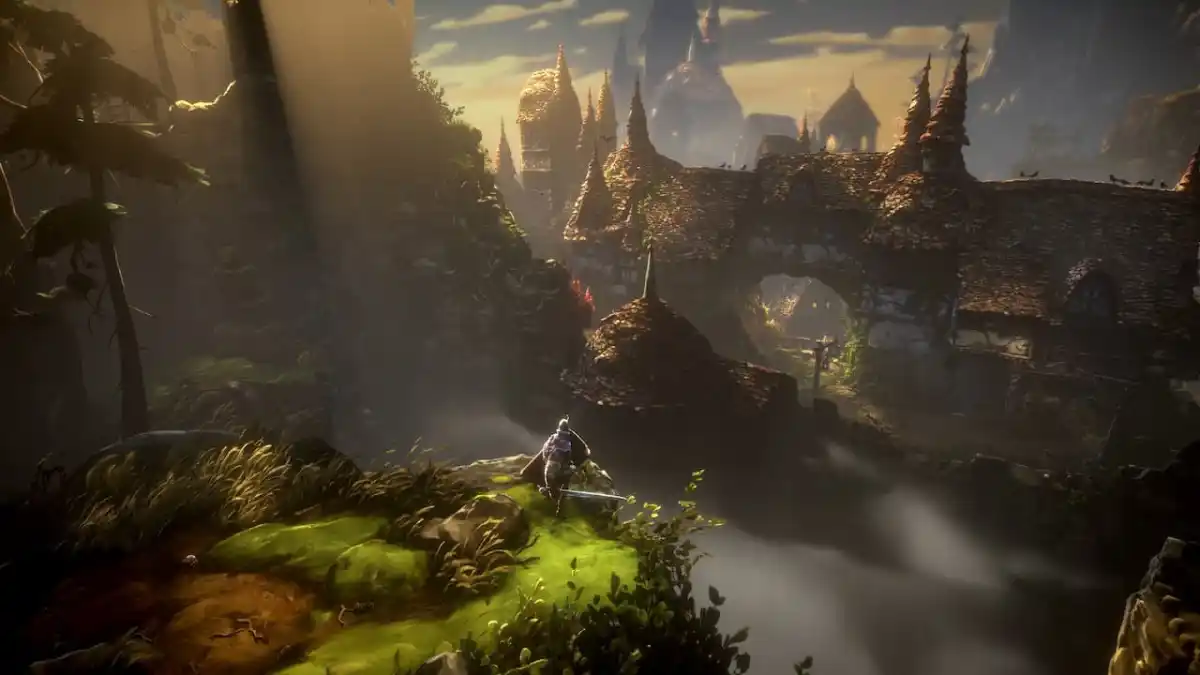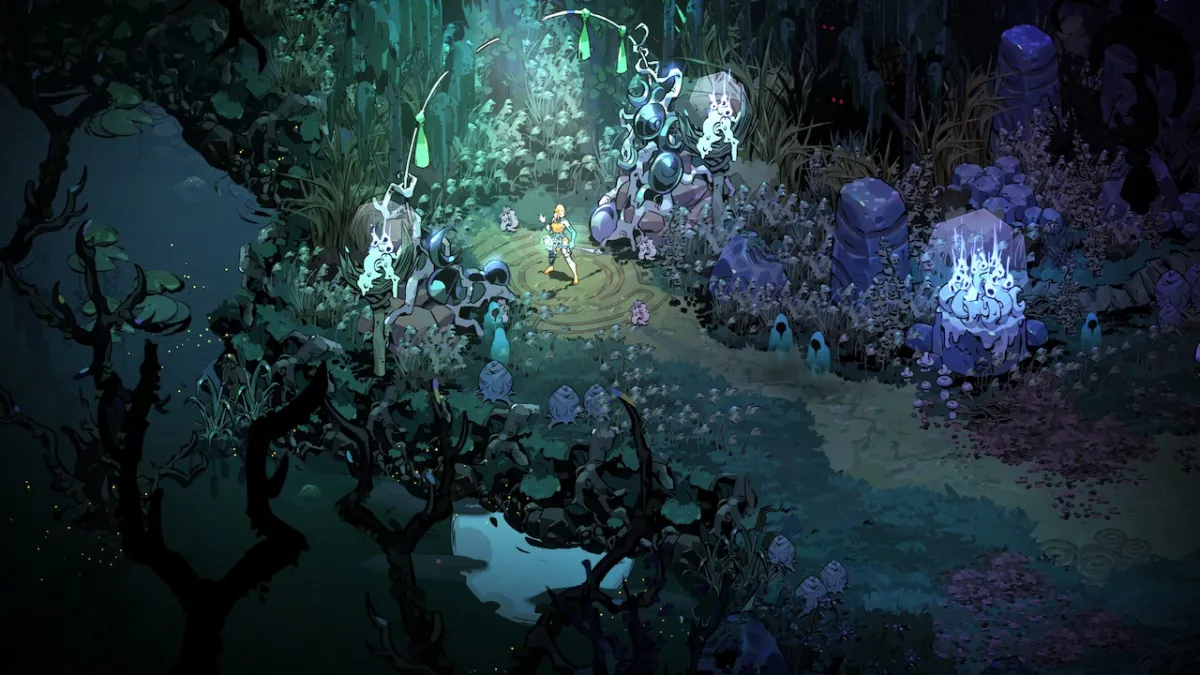Mirror’s Edge reflects developer DICE’s Scandinavian roots. Graphically it’s all clean lines, with washed-out colours and minimalist design; while aurally there’s an ethereal, Röyksoppian soundscape that gives way to thudding techno in the myriad of chase sequences that litter the game. There’s something else Nordic in there too, though: the sudden, maddening inability to work out the quickest way to the warehouse through a throng of angry-looking potential killers. An IKEA element, if you will.
The game’s main character, Faith, lives in a totalitarian state in the near-future, where the only way to get restricted information from one person to another is through the use of ‘runners’. She’s one of them, parkouring her way across the city’s rooftops to deliver packages like a flashier FedEx. Unfortunately, the story doesn’t quite match the potential of the premise. Faith is a delivery girl for barely a mission before the plot descends into an overly-familiar tale of her sister being framed for murder, while Faith is hunted by powerful forces as she attempts to find out why. The usual conspiracies, betrayals and plot twists abound, and it’s no surprise to see in the credits that the story was contracted out to a third-party. It never quite fits with Mirror’s Edge’s aesthetic, unfortunately, and the same is true of the 2D animated cutscenes, which succeed in being different and are competently voice-acted, but feel somehow separate from the rest of the game’s design.
The freerunning gameplay resembles the famous BBC advert from 2001, or ‘that bit’ in Casino Royale. Sprinting from roof to roof, Faith leaps, wall-rides and rolls in a carefully choreographed display of athleticism, rarely more than an inch away from plummeting to a particularly splatty death on the ground far below – and you’re her choreographer. The first-person perspective brings a fresh twist to platforming that would otherwise be seen as very Prince of Persia: Sands of Time.Immersion is the key here: when you leap to a new roof, you see Faith hitch-kicking her legs as if she’s still running in the air; when sliding under a head-high obstacle, Faith’s lower body curls up in front of you. The sense of viewing the game through the eyes of someone physical – rather than just being a central reticule attached to nothing – is reminiscent of what Breakdown tried to do on the original Xbox, but far more successful. The very real possibility of motion sickness from such a viewpoint is reduced by the presence of a dot visible at all times in the centre of the screen, which serves to focus your eye on a single point. Meanwhile, an unusual control scheme, with the parkour actions mapped to the bumper and trigger buttons, initially feels odd after so many years of pressing A to jump, but quickly becomes instinctive.
With the city being one big parkour playground, Faith’s ‘runner vision’ highlights objects that will help you take the optimum route to a particular place (for example, ramps to leap off, or drainpipes to grab) in red. This is extremely useful, as while pressing B will point you towards your final destination, the only way to get there is often in a different direction around the rooftops of several buildings. Runner vision can be switched off if you don’t want the help, and there are alternate routes to find if you wish to go exploring, although the outdoor levels are effectively wide corridors rather than offering you the opportunity to go anywhere you want. There are also many interiors in the game, and despite the variety of design elements present in the offices, warehouses, sewers and boats, these are less successful. Jumps are more fiddly, the viewpoint is often cramped, and the way to go next can be obscure. Faith’s runner vision can point to somewhere a number of floors up, for example, with you having next to no idea how to get there.
When gun-toting enemies are introduced, the above problem is magnified. You can engage your opponents in hand-to-hand combat, or disarm them and use their own guns against them, but the combat system is clunky, and, amazingly for the developer of the Battlefield games, the shooting mechanics are stilted. It’s clear that Faith isn’t ‘meant’ to shoot the guards (there’s even an achievement for getting through the game without using a gun), but the fact remains that the combat exists and should be far better than it is. Even after completing the game, I still wasn’t overly confident about my mastery of the disarm timing, and actively dreaded enemy encounters. On some of the later levels, particularly the interiors, it’s nigh-on impossible to escape the guards without engaging them in a war of attrition, whereas earlier you could run past them in an exciting rush of adrenaline.
Situations like this ultimately make Mirror’s Edge more of a rough diamond than it really ought to be. Trying to work out a route through the more complicated environments is challenging enough at the best of times, but having to do it while facing multiple enemies is an exercise in frustration. The last time this much trial and error was on display, it was 1975 and the Birmingham Six were in town. While the automatic reloads after dying are quick enough, it’s still maddening to fall to your death on a particular jump time after time, particularly when you’re also being peppered with bullets, and even more so when you’re sure you’re going the right way. Checkpoints are frequent, but there’s still the occasional tricky sequence of jumps and encounters to go through before you reach the point you originally died at.
The game’s story mode never outstays its welcome at about eight hours long, and longevity is provided by the Time Trial and Speed Run modes, where you compete for times on Xbox Live against other people’s best runs and for qualifying stars, on a selection of the game’s environments. All of a sudden, it becomes not just about ‘how’ to get somewhere, but how to do so extremely quickly. The ability to download and race against ghost times highlights the short cuts that other people have already found, and there’s no doubt that shaving seconds off your run is an extremely addictive time-sink.
Whether it’s the visuals, the first-person platforming, or the 2D animated cutscenes, everything here screams, ‘I want to be different’. For the most part, this distinctiveness is a breath of fresh air in today’s often identikit software market, but the issues present drag the game down from being excellent to merely pretty good. Not quite a free run to a high score, then, but Mirror’s Edge is definitely worth the trip.


